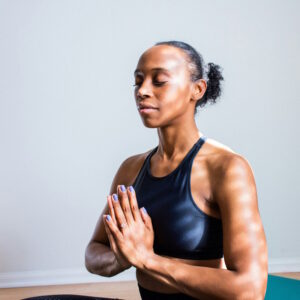
Breathing is an essential aspect of Pilates that often goes unnoticed but plays a fundamental role in the practice. Proper breathing techniques are crucial for achieving the full benefits of Pilates exercises, enhancing focus, and promoting overall well-being. In this guide, we’ll explore the importance of breathing in Pilates, the reasons behind learning specific breathing techniques, and the methods employed to achieve optimal breathing during Pilates exercises.
Why Is Breathing Important for Pilates?
Breathing is integral to the practice of Pilates for several reasons:
1. Core Activation: Proper breathing engages the diaphragm, which supports core muscle activation. It helps stabilize the spine and pelvis, promoting a strong and stable core.
2. Oxygenation: Effective breathing ensures an adequate oxygen supply to the muscles, enhancing endurance and preventing fatigue during exercises.
3. Mind-Body Connection: Focused breathing enhances the mind-body connection, helping you become more aware of your movements and alignment.
4. Stress Reduction: Controlled and rhythmic breathing can induce a relaxation response, reducing stress and tension.
5. Energy Flow: Efficient breathing helps facilitate the flow of energy throughout the body, promoting vitality and a sense of well-being.
Why Is It Important to Learn Breathing Techniques?
Learning specific breathing techniques in Pilates is vital for several reasons:
1. Control: Proper breathing techniques allow for better control of movements. Inhaling and exhaling at precise moments can enhance the effectiveness of exercises.
2. Stability: Breath control supports core stability, reducing the risk of injury and enhancing balance.
3. Focus: Breathing techniques encourage mindfulness, helping you stay present in your practice and concentrate on the quality of movements.
4. Efficiency: Learning how to use the breath efficiently can make exercises feel more manageable and reduce the perception of effort.
5. Stress Management: Pilates often incorporates relaxation and stress-reduction components, and proper breathing is an integral part of this process.
What Are the Breathing Techniques for Pilates?
Pilates employs specific breathing techniques to enhance the practice:
1. Lateral Thoracic Breathing: In lateral thoracic breathing, you focus on expanding the ribcage sideways while inhaling. This type of breathing encourages expansion in the ribcage area and supports core engagement.
2. Diaphragmatic Breathing: Diaphragmatic breathing involves deep inhalation into the lower lungs, allowing the diaphragm to move downward. It promotes relaxation and supports core activation.
3. Coordination with Movement: In many Pilates exercises, the breath is coordinated with movement. For example, you might inhale during the preparatory phase of an exercise and exhale during the active phase.
4. Rhythmic and Controlled: Breathing in Pilates is often rhythmic and controlled. Inhales and exhales are deliberate and coordinated with the movement, enhancing precision and control.
5. Intra-Abdominal Pressure: In some exercises, you may be instructed to create intra-abdominal pressure by exhaling forcefully, which can help stabilize the core and protect the spine.
6. Nose vs. Mouth Breathing: Pilates often encourages nose breathing, as it filters and humidifies the air. However, in some situations, mouth breathing may be appropriate for maximum oxygen intake.
Summarizing the Answers
In summary, breathing is a fundamental element of Pilates that contributes to core stability, oxygenation of muscles, mind-body connection, stress reduction, and energy flow. Learning specific breathing techniques in Pilates is crucial for control, stability, focus, efficiency, and stress management. The practice incorporates techniques such as lateral thoracic breathing, diaphragmatic breathing, coordination with movement, rhythmic and controlled breath, and the creation of intra-abdominal pressure. By mastering these techniques, you can enhance your Pilates practice, deepen your mind-body connection, and experience the full range of benefits that Pilates has to offer.